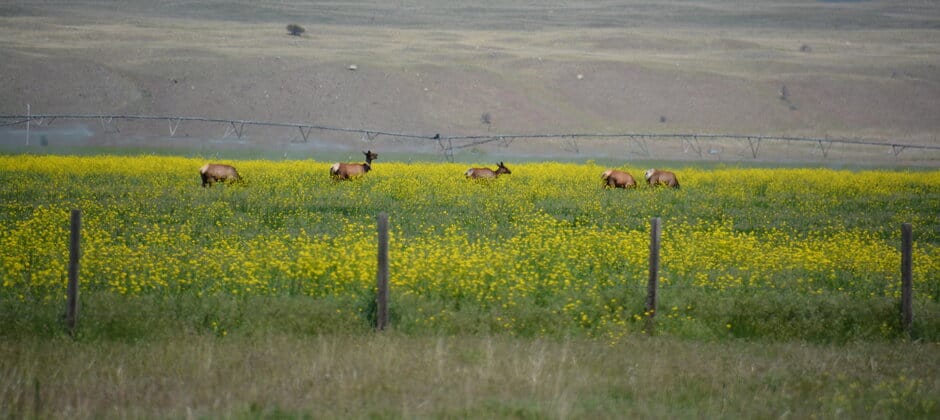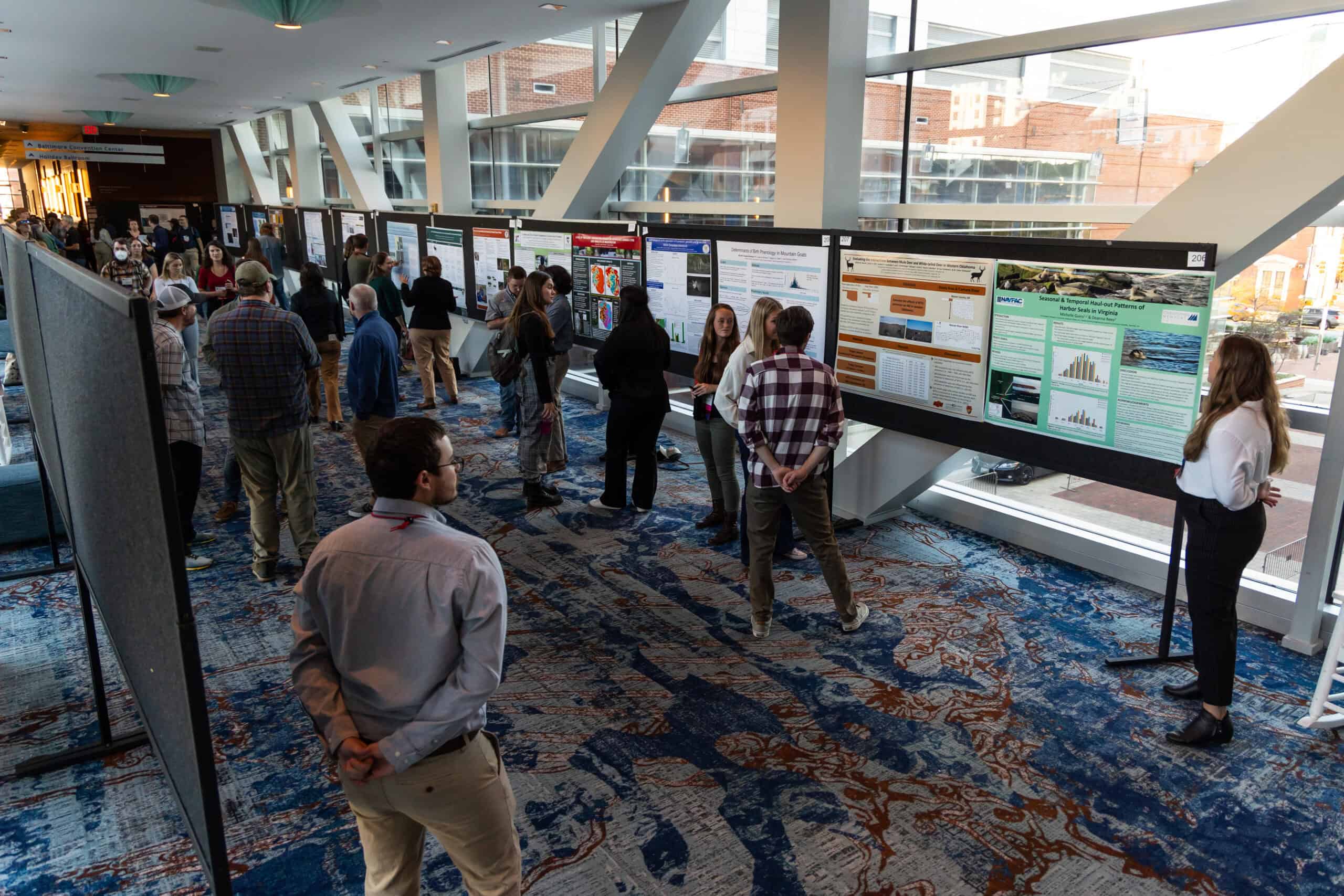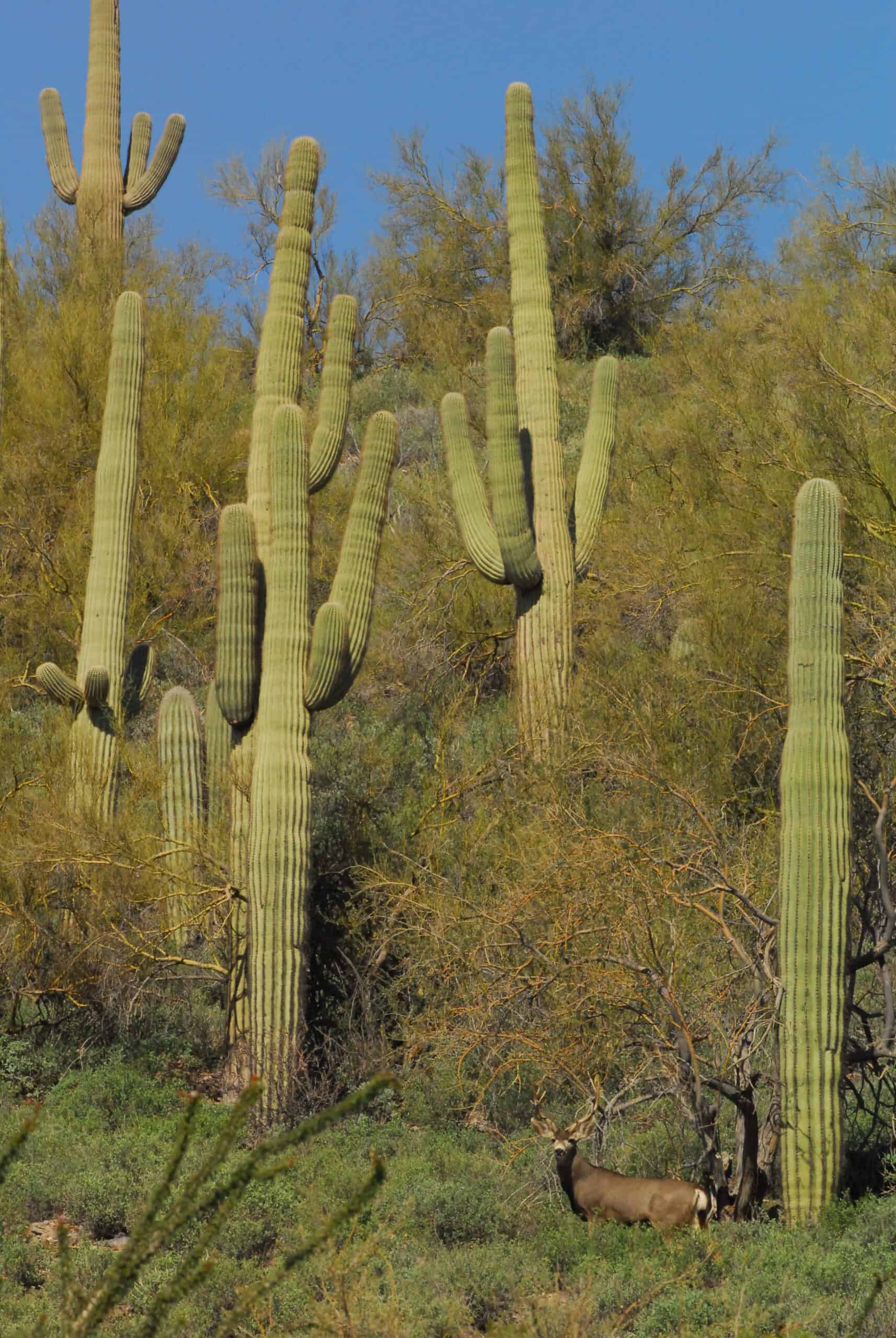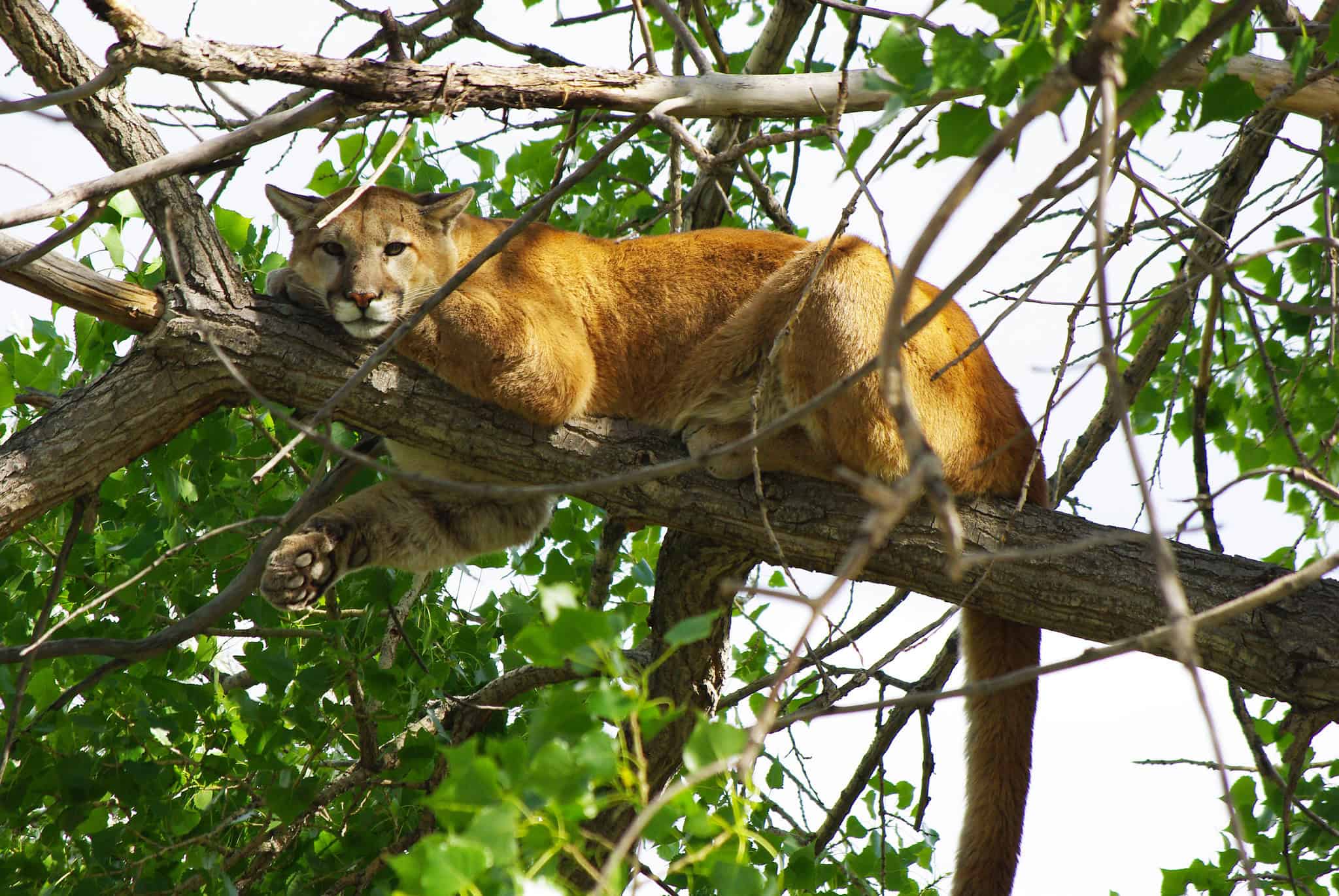Share this article
Tracking brucellosis hot spots in Yellowstone area
Hazing elk and increasing harvest in private ranches in the Greater Yellowstone Ecosystem could limit the spread of brucellosis between elk and livestock.
Brucellosis is a wildlife disease that causes aborted fetuses in some ungulate species. Cattle can also contract the disease, oftentimes resulting in ranchers euthanizing them so they don’t spread the disease among the domestic herd. The disease is a cause of contention between ranchers, wildlife managers and conservationists with regards to species like bison (Bison bison) and elk (Cervus canadensis).
The primary pathway for disease spillover happens when cattle come into close contact with aborted elk fetuses.
Researchers wondered if there were particular areas, or times of the year, when brucellosis was more likely to pass from wild elk to domestic cattle and domestic bison in the Greater Yellowstone Ecosystem. To do so, they compared large data sets showing the likely presence of cattle with those showing the seasonal movements of elk in the area around Yellowstone National Park.
“We have estimates of when elk are most likely to abort, and where elk are likely to be on those landscape at those times,” said Nathaniel Rayl, a wildlife researcher with Colorado Parks and Wildlife and the lead author of the study published recently in the Journal of Animal Ecology.
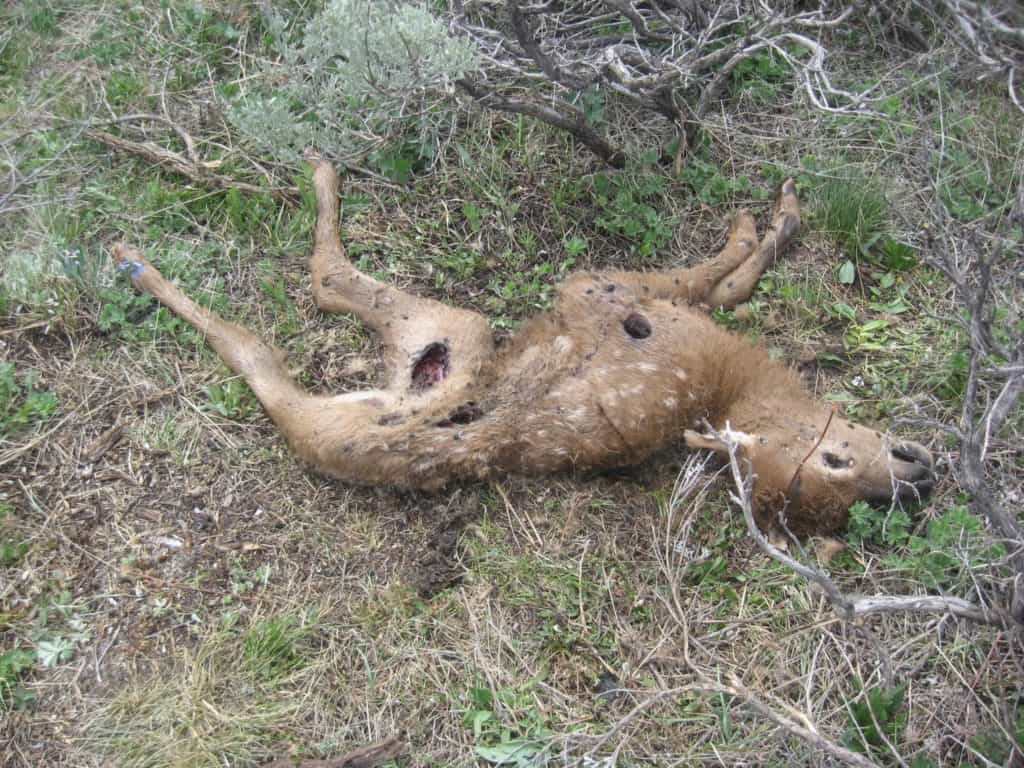
Aborted elk calves can transmit brucellosis to other elk and to domestic cattle.
Credit: Jennifer Jones
Rayl and his colleagues identified private grazing land where livestock were potentially present and information on grazing allotments on public land from government agencies. They combined this with environmental data and information on disease, movement and demographics of eight elk herds.
The team found differences between elk migrants, which don’t spend most of their time in any one area, and residents, which more or less stay put during calving season. Most female elk give birth in the beginning of June, but those infected with brucellosis typically abort their fetuses sometime between March and May. Those periods represent the largest risk for brucellosis spillover, Rayl said.
An earlier study, published in the Journal of Wildlife Management, found that 98% of the risk for spillover occurred on private ranchlands rather than public land.
The more recent research found that migrant elk were responsible for 68% of the risk of spillover because these ungulates are larger in numbers than resident elk that spend the whole season staying put in ranchlands.
Resident elk only represented 32% of the risk for spillover, but individual resident elk were 23% more likely than individual migrant elk to abort fetuses on private ranchland where livestock are more likely to occur.
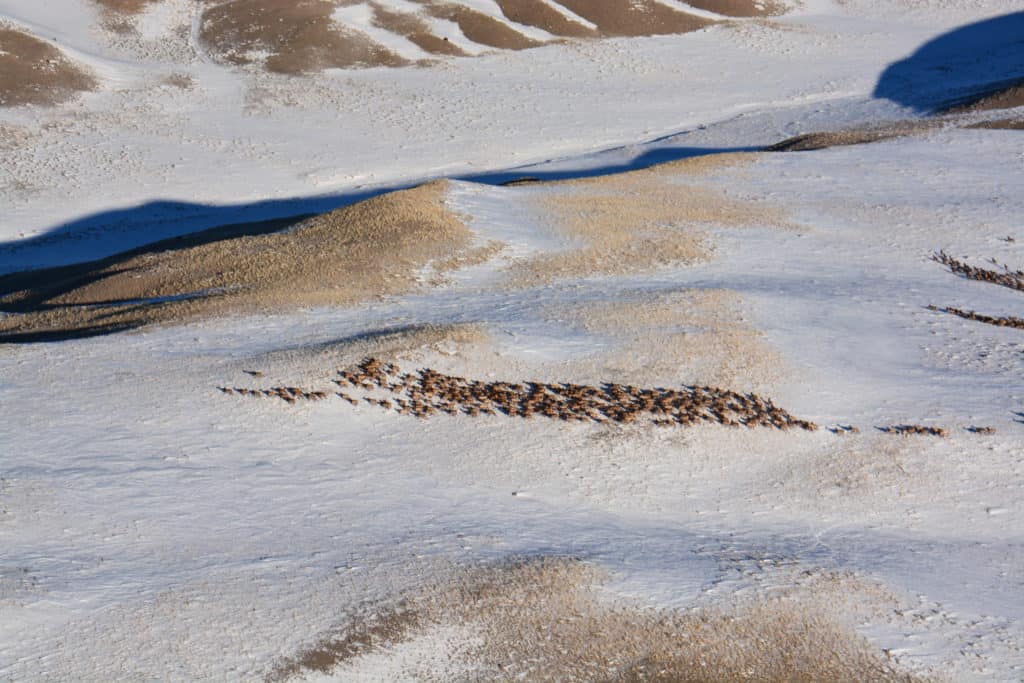
Elk migrants typically stay in private ranch areas when snowfall occurs later in the spring in the Greater Yellowstone Ecosystem. Credit: Jennifer Jones
The researchers also found that snowfall in the mountains impacts disease spillover. When snowfall occurrs later in the spring, migrant elk were more likely to stay in private ranch areas. A portion of these infected with brucellosis will then abort more fetuses in areas that cattle might come into contact with.
These results suggest that wildlife managers should focus activity on keeping elk out of private ranchlands from March to May, either by hazing them or by using late-season elk hunts to disperse or redistribute elk prior to the brucellosis risk period, Rayl said. Managers should also pay attention to weather conditions when planning the best focus of time and energy.
“If we’re trying to decrease spillover risk, we want to focus on those private ranchlands during that period,” Rayl said.
Header Image: Elk cows grazing on a hay meadow. Credit: Jennifer Jones



